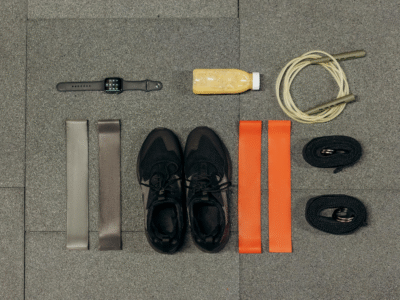Wild swimming has become increasingly popular in the UK in recent years — here’s how to stay safe while exploring in nature, according to the experts
For the past few years, wild swimming in the UK has been booming. One of the key factors driving this growth is its numerous health benefits — according to this study, open water swimming (which refers to swimming activity that takes place outside of a swimming pool environment) reduces negative mood states such as tension, anger, fatigue and symptoms of depression and anxiety.
It can also ease aches and pains, boost your immune system and improve your circulation — it’s a cheap and broadly accessible activity that requires little to no specialist equipment. However, it’s not without risks. In 2022, there were 226 deaths in the UK from accidental drownings, across inland and coastal locations.

How to prepare for a safe swim
“Before going swimming in open water, it’s important to be prepared. Check the weather conditions and tides — this might affect your plans,” says Gabbi Batchelor, water safety education manager at the Royal National Lifeboat Institution (RNLI). She also warns: “Seek advice from a healthcare professional, especially if you have underlying health conditions and are going to experience cold-water immersion for the first time.”
One of the greatest risks of wild swimming is cold water shock, which can occur when swimmers enter water below 15C too quickly. Symptoms include involuntary gasping for breath, increased heart rate, increased blood pressure, uncontrollable breathing rates and panic.
“Acclimatise slowly to avoid cold water shock,” says Gabbi. “It’s important to enter the water slowly and allow time for your body to get used to the cold. Don’t jump or dive straight in, as this could cause cold water shock. Instead, splash your face and the back of your neck and try not to hold your breath.”
Gabbi also recommends open water swimmers wear a brightly coloured swim hat and consider using a brightly coloured tow float so that they have the best chance of always being seen.
The advice from the RNLI is to ‘Float to Live’. Approximately 53 million of the UK adult population (aged 16-64) plan to visit or have visited the coast this summer, but 10% of people in a survey said the potential dangers associated with the water are something they don’t think about often and, worryingly, 36% of people don’t know what to do if they get into trouble in the water.

If you find yourself in difficulty in the water, here’s how you ‘Float to Live’:
- Tilt your head back with your ears submerged
- Relax and try to control your breathing
- Use your hands to help you stay afloat
- Don’t worry if your legs sink — everyone floats differently
- Spread your arms and legs to improve stability
“There’s no such thing as a safe swim, only safe swimmers,” say Kate Rew, founder of The Outdoor Swimming Society. “No water is safe if you can’t swim.”
If swimming in tidal waters, it’s important to look out for rip currents — strong currents running out to sea, which can quickly drag people out to deeper water. They’re difficult to spot but can be identified by a channel of churning, choppy water on the surface of the ocean. Beyond the sea, they can also be found around river mouths, estuaries and man-made structures like piers and groynes.
“If in doubt, don’t go out,” says Gabbi. “Before you enter the water, assess the conditions. If the water is too rough for swimming, don’t get in. Know your limits — depending on the conditions, you may need to swim less or closer to the bank or shore. The temperature of the air and water is also important … the colder it is, the less time you should spend in the water.”
She recommends downloading the RYA SafeTrx app (UK) or Irish Sailing SafeTrx app (Ireland), which can track your swim and alert emergency contacts if you fail to return home on time.

How to know if water is clean enough for swimming
Dangers of open water swimming also include pollution — from Weil’s disease to sewage releases, wild swimming isn’t without risk. According to data compiled by environmental charity Surfers Against Sewage (SAS), there were 584,001 discharges of raw sewage into UK waterways in 2023. Of the 86% of inland water bodies that fail to meet targets in England, 36% have been identified as failing directly as a result of sewage and wastewater discharges.
You can check for sewage alerts using the SAS Safe Seas & River Service, an app that provides a pollution forecast alongside surf conditions, wind direction, tide times, beach facilities and lifeguard services.
“We all want cleaner water and healthy ecosystems around it,” says Kate. “It’s natural as a swimmer to want to protect what you love. But swimmers don’t generally swallow water, so we’re more resilient to poor water quality than a lot of creatures we share the water with.”
Ultimately, if you’re diligent about keeping safe in the water, you can be free to enjoy the beauty of blue spaces. In a survey of over 1,000 members of its community, the OSS found that 94% of wild swimmers do so, simply for the joy it brings them.













